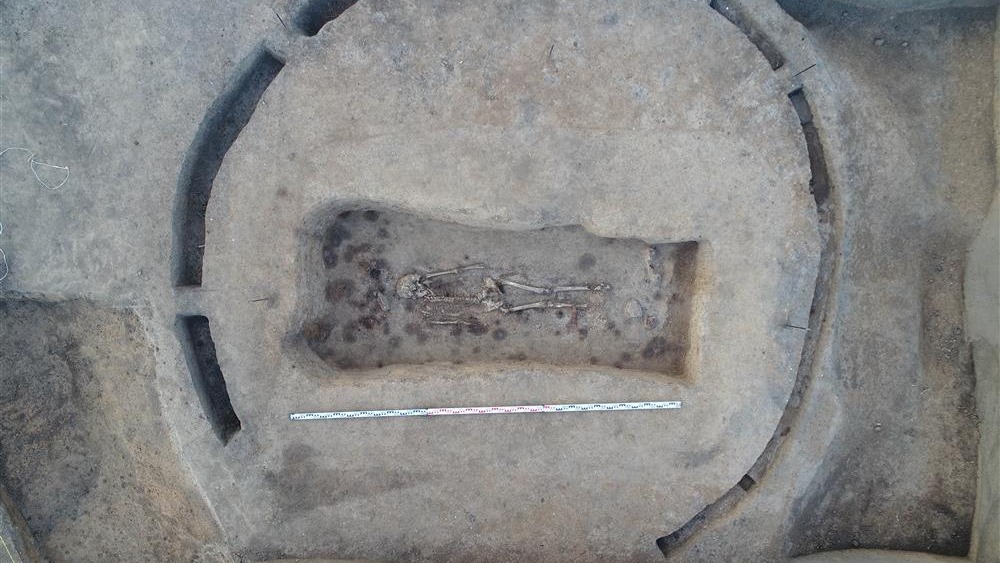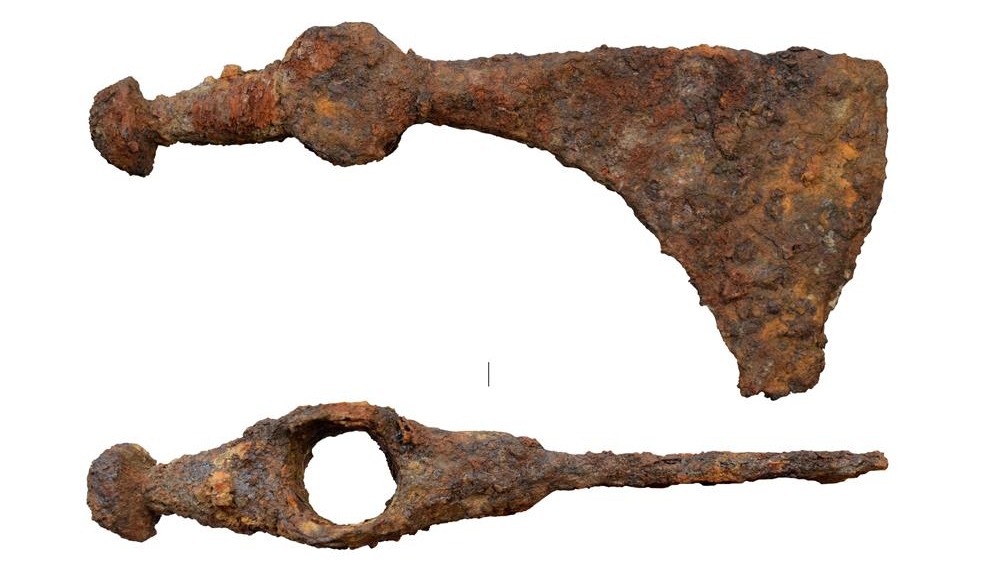
While excavating a vast cemetery in Russia, archaeologists unearthed two medieval human skeletons buried with battle axes and equestrian equipment.
Since 2020, researchers have been conducting fieldwork at the 7-acre (3 hectares) medieval site, known as the Gnezdilovo burial ground, which was originally discovered in 1851 in the town of Suzdal, located northeast of Moscow. During the latest excavations, archaeologists surveyed roughly 50 "undisturbed burials" scattered throughout the cemetery, according to a translated statement from the Institute of Archaeology of the Russian Academy of Sciences.
The cemetery has been a hotbed for archaeological discoveries, including "prestigious jewelry, coins and weapons."
However, one burial, known as grave No. 59, has captured archaeologists' attention because it contains the skeletal remains of a 35-to-40-year-old man who was buried with several artifacts, including a bronze belt buckle shaped like a lyre (a stringed musical instrument), a knife, a broken ceramic vessel and a metal battle ax.
Related: 8,200-year-old burials in Russia contain pendants crafted from human bone
This type of ax, which features a "small hammer" on one end and a semicircular notch at its base, was popular during the 11th and 12th centuries, and similar types have been found in Volga Bulgaria, a former state that's now part of Russia.

In the plot next to his are the remains of a man who was between 25 and 30 years old when he died. His burial contains a "complex wooden burial structure assembled without the use of iron nails;" another lyre-shaped buckle; a lock; a knife with the remnants of a sheath; equestrian equipment, such as stirrups and a buckle used to tighten a saddle; and a similar battle ax.
The archaeologists also found a series of different weights, which might have been used to weigh coins that were "collected as taxes."
Archaeologists remain unclear of the two men's identities, but based on the size of their graves and the tools they were buried with, they were likely "high status" and may have "performed fiscal functions," such as tax collection. Researchers concluded that the site offers a glimpse at the "formation of the military culture of northeastern Russia."







